Plant leaves are key components to the global carbon and water cycle, as virtually all carbon going from the atmosphere to terrestrial ecosystems passes through them, as well as ~70% of all terrestrial evapotranspiration. Ecophysiological research has primarily focused on how stomata and mesophyll cells respond to changes in their environmental conditions. However, there is a large intercellular airspace between the stomata and the mesophyll cells, and this space has most often been overlooked.
My current research focusses on plant structure and function relationship. I study leaf anatomy, both in 2- and 3D, in relation to photosynthesis, transpiration, and other diffusive processes along the path from the stomata to the chloroplast stroma. This research combines anatomical and ecophysiological measurements, as well as modeling.
Here is a selection of published papers from my two current research topics, as well as other projects I am or was involved. Full publication listing, with links to the full text when available, on the Publications page.
Plant structure and function
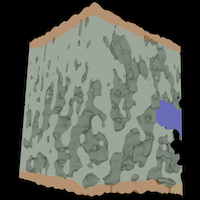
Théroux-Rancourt et al. (2021) Maximum CO2 diffusion inside leaves is limited by the scaling of cell size and genome size. Proceedings B of the Royal Society 288, 20203145.
We show that genome size determines the sizes and packing densities of cells in all leaf tissues and that smaller cells enable more mesophyll surface area, facilitating CO2 diffusion. Our results demonstrate that genome downsizing among the angiosperms was critical to restructuring the entire pathway of CO2 diffusion, maintaining high rates of CO2 supply to the leaf mesophyll despite declining atmospheric levels during the Cretaceous.

Earles et al. (2018) Beyond porosity: 3D leaf intercellular airspace traits that impact mesophyll conductance. Plant Physiology 178(1), 148–162.
With microCT imaging, we explore traits of the intercellular airspace other that porosity and reevaluated the estimation of airspace tortuosity using bromeliads as a model family with CAM and C3 species, showing a range in leaf architecture and porosity values.
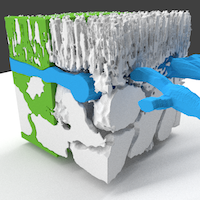
Théroux-Rancourt et al. (2017) The bias of a 2D view: Comparing 2D and 3D mesophyll surface area estimates using non-invasive imaging of internal leaf structure. New Phytologist 215(4), 1609–1622
This methods paper compares mesophyll surface area estimated using 3D microCT data to four published methods using microscopy slides, the first in depth comparison to our knowledge.
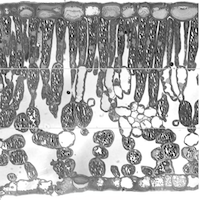
Théroux-Rancourt and Gilbert (2017) The light response of mesophyll conductance is controlled by structure across leaf profiles. Plant, Cell & Environment 40, 726–740.
The mesophyll conductance response to light can be only apparent and explained by the variation in light intensity within the leaf.
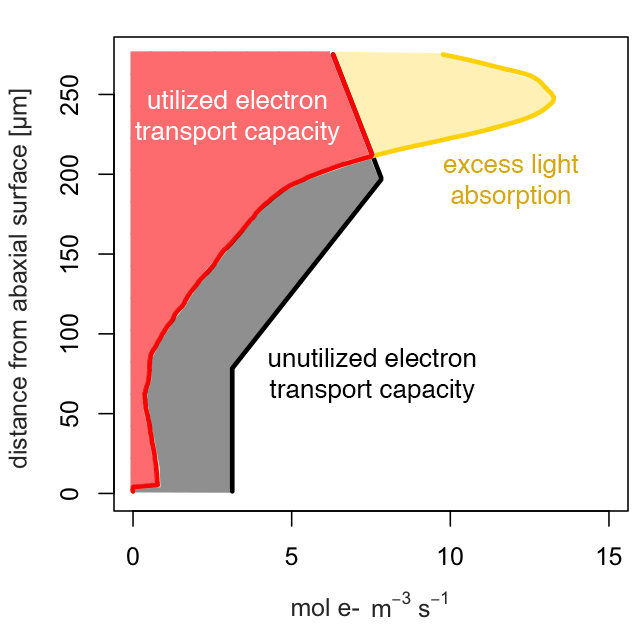
Earles et al. (2017) Excess diffuse light absorption in upper mesophyll limits CO2 drawdown and depresses photosynthesis. Plant Physiology
Excess absorption of diffuse versus direct light in the upper mesophyll of sun-adapted sunflower leaves leads to sub-optimal photosynthesis.
Computational biology
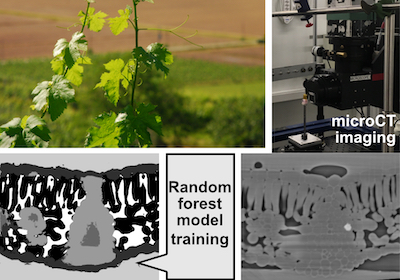
Théroux-Rancourt, Jenkins, Brodersen, McElrone, Forrestel, Earles (2020) Digitally deconstructing leaves in 3D using X-ray microcomputed tomography and machine learning. Applications in Plant Sciences 8(7), e11380.
We present and test a Python-based random forest machine learning program for the automated segmentation of plant leaf microCT scans.
Mesophyll conductance
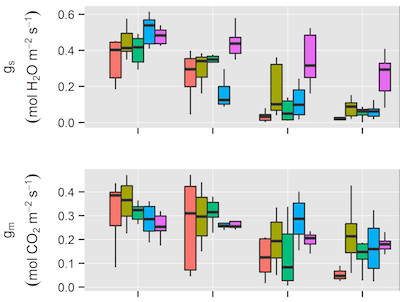
Théroux-Rancourt, Éthier, Pepin (2015) Greater efficiency of water use in poplar clones having a delayed response of mesophyll conductance to drought. Tree Physiology 35, 172–184.
More water efficient hybrid poplars exhibit a delay of a few days in the decline of mesophyll conductance compared to stomatal conductance.
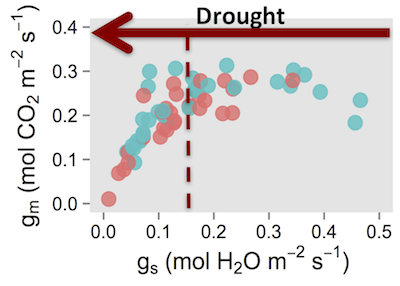
Théroux-Rancourt, Éthier, Pepin (2014) Threshold response of mesophyll CO2 conductance to leaf hydraulics in highly transpiring hybrid poplar clones exposed to soil drying. Journal of Experimental Botany 65, 741–753.
This paper brings support to the hypothesis of a partial hydraulic isolation of the mesophyll from the main transpiration pathway through uncoordinated variation of mesophyll and stomatal conductance in hybrid poplar.
Other plant physiology projects
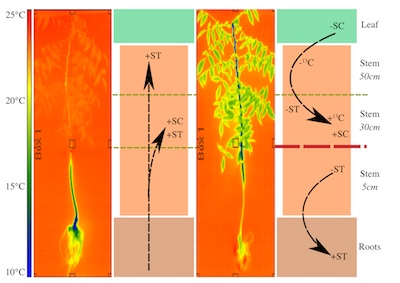
Sperling et al. (2017) Temperature gradients assist carbohydrate allocation within trees. Scientific Reports 7, 3265.
Simulated spring conditions promoted allocation of non-soluble carbohydrates to canopy, while fall conditions enhanced allocation to roots, and summer favored a neutral above-to-belowground allocation.